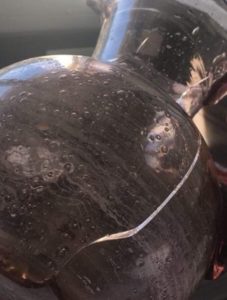This week marks the end of formal teaching for Academic Year 2020/21. All courses have been online this year due to the pandemic. I taught several modules, each lasting 12 weeks. One module ran smoothly: I felt a growing sense of intimacy, we shared a good sense of humour and creativity was flowing. The group was balanced and each week was a joy.
Another module was more challenging. I’m going to reflect on that module. In hindsight, this was one of the hardest groups I ever taught. Most of the participants were very shy. None had any experience in performative pedagogy or drama. Nevertheless, the students took a leap of faith and, over the weeks, engaged in improvisation, dance, process drama and other embodied approaches.
Last week we had a guest lecturer, an experienced applied theatre facilitator who started the class by asking the group to introduce themselves and state something they were passionate about. Silence. A few students contributed, but most remained quiet. The next actitivies involved a sensory exercise followed by the recollection of a past event, and image theatre work. The final activity required them to choose an image online (in breakout rooms) and recreate that image through body and soundscape. Again, little engagement – or so it seemed.
This activity sparked some debate. It got us talking about protection into emotion and (aesthetic) distancing – two hot topics in the field of Drama in Education. Eriksson, among others, talks about this in Distance and Awareness of Fiction. In a nutshell, if the gap between the role you are playing and yourself is too small, you may have an emotional experience that is too raw, and that is counter-productive. Is that what happened?
Once I had a glass caraffe. It had been sitting on a shelf, gaining dust. I noticed it and thought it was beautiful. I thought, why not use it? I grabbed it from the shelf and, as I was making myself a pot of tea, I poured hot water into it. Wrong move. A few seconds later, I watched in dismay as the grass cracked. In less than a minute the object’s integrity was compromised. The content was too hot, and the material form didn’t hold. The thin layer of blown glass was too delicate for the hot boiling water. I took a photograph (below) before it imploded.
The same day, delivered a key note address at the Grenoble Drama and Language Summer School 2019. The key note was on the role of the emotions in drama, and on distancing and protection. I spoke about the caraffe, and used that incident to make my point. It came to mind again this week, when I was reflecting with my students on the applied theatre workshop.
When emotions are way too intense, the form won’t hold – if the glass cracks, the content will implode. In drama, this may result in a wide range of behaviours: students crying; students acting out; students leaving; or students remaining mute – the silent treatment. Resistance, or rejection, is augmented when working online, as the facilitator has less tools for interpreting the issues at hand, and students can (literally) switch off from the work. That can add to the facilitator’s Digital Displacement.
In the class described above, my students did not leave, but seemed to turn off emotionally. The following week I asked them what happened. Why did they not engage with the guest lecturer? After what seemed like an honest discussion, it emerged that the task ‘introduce youself and share something you are passionate about’ was too direct. Invasive. Some participants mentioned shame, not feeling good enough to speak out.
I can definitely relate to that. At a staff meeting today I had to defend something I really cared about. I was so passionate about the issue, that I wasn’t able to articulate my point. In fact, I miserably failed to make my point. It was embarassing. Sometimes my language anxiety flares up, and my language skills drop. This time, they dropped underground. I just rambled on. I felt my colleagues’ commiseration through the four corners of the screen on the Teams call. Later, I just wanted to disappear, to sink in a nest of shame.
Back to my students. When the guest facilitator asked them what they were passionate about, it was too instrusive for some of them. That instance may have had the same impact as what I felt at the staff meeting. In that case, on top of language anxiety, profound intercultural differences in communication style and cultural expectations of partecipation levels further triggered an intercultural misunderstanding.
To bypass this difference in communication styles, for the final week of the module I facilitated an exercise based on visual metaphors. I used the Metaphors of Knowledge card set, a collection of 30 illustrations of different ways of representing knowledge. I guided students through a range of common metaphors we use to make sense of knowledge construction. Everyone chose one image to reflect on their experience. They say a one picture is worth 1000 words: this visual crutch is what they needed to overcome their language anxiety. I finally felt, in the last half-hour of the course, they were empowered to speak out.
Note to self: never underestimate the cultural make up of a group, and how it can impact on distancing and engagement levels. Always make the effort to ask the students when something feels off. Even if it feels uncomfortable, dialogue can untangle an intercultural misunderstanding. Language anxiety hurts, but it’s a beast that can be tamed. And never, ever pour hot water in a blown glass caraffe.


